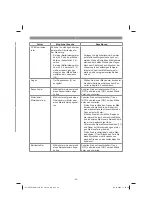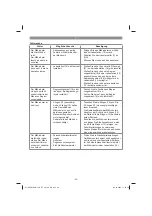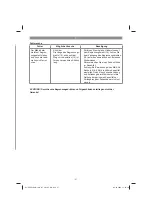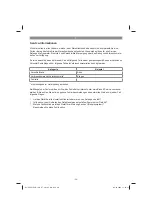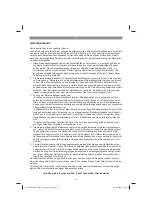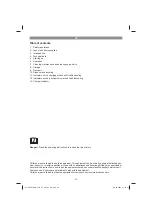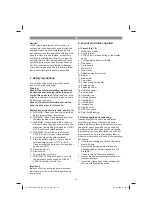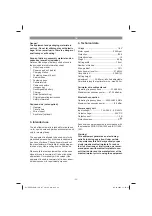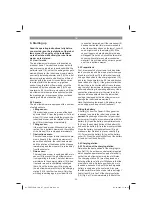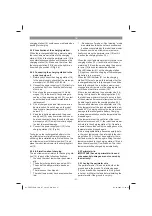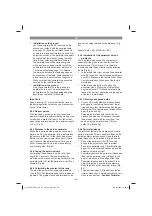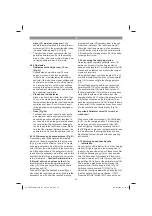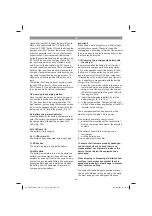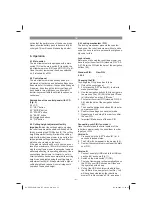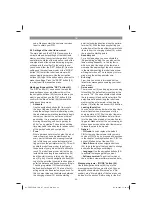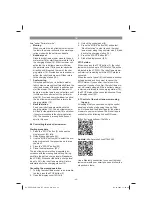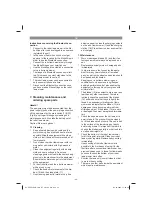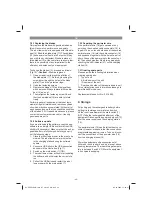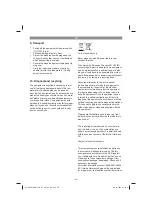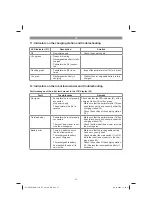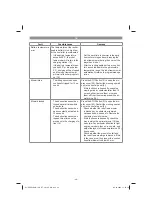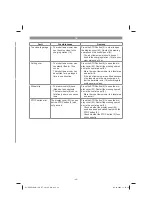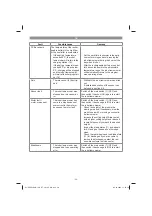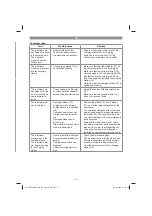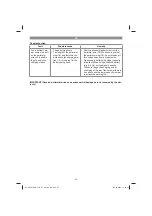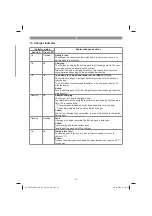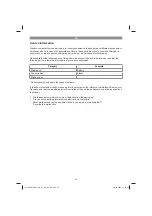
GB
- 39 -
wires (18) must not cross over!
- You
should therefore fasten both the parallel peri-
meter wires (18) to the ground together using
the same fastening peg (14). (Fig. 6i)
•
The robot lawn mower will run over the two
parallel perimeter wires (18) in the mowing
area, but the robot lawn mower will stop whe-
re single perimeter wires (18) are laid.
5.5.9 Obstacles
•
Obstacles with a height over 10 cm
(Fig. 6j)
Solid obstacles which are over 10 cm in
height, e.g. trees, walls, fences, garden
furniture, etc., are detected by the collision
sensors. If the robot lawn mower collides with
an obstacle, it will stop, switch off the mower
unit, reverse and turn so that it can continue
mowing in the other direction. Soft, unstable
and valuable obstacles need to be protected
by a perimeter wire island.
•
Stones and low obstacles
Stones, rocks and low obstacles of less than
10 cm in the mowing area need to be protec-
ted, because otherwise the robot lawn mower
could run over them. If not, this could result
in the robot lawn mower getting damaged or
blocked.
•
Trees (Fig. 6k)
The robot lawn mower treats trees as obsta-
cles. However, where any tree roots project
above the ground to a height of less than 10
cm, the area in which they are located needs
to be protected. This will prevent damage to
the roots and to the robot lawn mower. Make
sure that the minimum distance between the
perimeter wire (18) and the obstacle is 30 cm.
5.5.10 Main area and secondary area (Fig. 6l)
A secondary area (B) designates a work area
which is not directly connected to the main area
(A), e.g. via a stretch of lawn or a path. To create
a separate secondary area (B) lay the perimeter
wire (18) from the main area (A) to the secondary
area (B) and back again. The perimeter wire (18)
to and from the secondary area (B) should be laid
such that the return run is parallel and very close
to the forward run.
- Caution! Perimeter wires
(18) must not cross over each other! -
You
should therefore fasten the parallel perimeter
wires (18) to the ground jointly using the same
fastening pegs (14).
To be able to mow the secondary area (B) you
must carry the robot lawn mower by hand into the
secondary area (B). Start the required mowing
program and select “Secondary area” in the sub-
menu (see „Settings of the robot lawn mower“).
When the robot lawn mower is in the secondary
area (B) it will not try to follow the perimeter wire
(18) towards the charging station (19) if the batte-
ry charge level is low.
5.6 Connecting the charging station
Finish laying the complete perimeter wire (18)
before you connect it to the charging station.
Keep an extra length of 1 m of perimeter wire (18)
at each end so that you can make further adjust-
ments at a later time.
Using a wire stripper, remove a length of 10 to 15
mm of the insulation at the ends of the perimeter
wire (18) for connecting to the charging station
(19).
Pull out the power plug before you connect the
perimeter wire (18) to the charging station (19).
The perimeter wire (18) laid to the front end of
the charging station (19) must be run to the back
via the cable holders on the underside of the
charging station (19). Connect this perimeter wire
(18) to the connection on the left (black). Then
pass the rear perimeter wire (18) through the hole
(stress-relief) in the connection area and connect
it to the connection on the right (red) (Fig. 7a).
Important! Perimeter wires (18) must not
cross over!
Then connect the power supply. The LED indica-
tor (21) on the charging station (19) should light
up green and stay on permanently. If the LED
does not light up, check the connections
fi
rst. If
the LED lights up green but not permanently, read
the “Indicators on the charging station and trou-
bleshooting” table at the end of these operating
instructions.
5.7 Switching on and checking the
installation
As soon as the LED indicator (21) on the charging
station (19) lights up green, the mowing area is
ready for the robot lawn mower. Please check
fi
rst
that all the fastening pegs (14) on the perimeter
wire (18) have been fully tapped in. Place the ro-
bot lawn mower about 3 m to the rear of the char-
ging station (19) in front of the perimeter wire (18).
The robot lawn mower needs to be facing the
perimeter wire (18) at an angle of 90° (Fig. 7b).
Switch on the main switch (7) (ON) (Fig. 8).
Unlock the robot lawn mower by entering the PIN
(see the section “Locking mechanism / PIN”).
Press the “MODE“ button (52). Then use the na-
Anl_FREELEXO_LCD_BT_plus_SPK13.indb 39
Anl_FREELEXO_LCD_BT_plus_SPK13.indb 39
05.10.2022 11:10:35
05.10.2022 11:10:35

